- Created by Anthony C, last modified on May 24, 2022
You are viewing an old version of this page. View the current version.
Compare with Current View Page History
« Previous Version 10 Next »
Overview:
This guide provides instruction on configuring both Medical-Objects Capricorn and Best Practice software to import electronic results.
If you require any assistance with the installation or configuration, or if you have any questions, please contact the Medical-Objects Helpdesk on (07) 5456 6000.
If you have not Installed the Medical-Objects Download client, Please see the guide for Installing Capricorn on Windows.
Pre-Configuration Checks for Best Practice
If you have not done so already please confirm you have followed the instructions here before proceeding
Configuring Capricorn Software
Accessing the Capricorn Configuration Window
- To launch the HL7 Tray application, Go to Start Menu, All Programs, Medical-Objects and select the Medical-Objects Capricorn. Alternatively, You can go to C:\MO\Capricorn and run the Capricorn.exe.
- The following icon will appear in the tray. Double click on it to bring up the log window.

- When the log window is displayed, Click on the Configuration icon highlighted below, or select Utility and select Configuration.

Capricorn Configuration Settings
- Once a base path is determined, via either option a or b below, 3 directories are required; IN, OUT and ACK (These paths may already exist).
- If a base path for Medical Objects messaging has not been set in most cases C:\MO\Results\ can be used. This folder will need to be shared with read/write permissions on the network (Best Practice requires UNC paths for the import/export locations).
- If the Capricorn is already installed you will more likely use the current base path set. This path may already have a network share associated with it and can be confirmed using a command prompt and checking the listing of "net share" .
Click on Ack Management.
Set the Folder for Acks created by this practices PMS path to the ACK path related to the base path chosen in step 1.
Suggested:
C:\MO\Results\Ack
Set the Folder to save external Acks for PMS path to the IN path related to the base path chosen in step 1.
Suggested:
C:\MO\Results\In

Click on Integration Options.
3.1 Check that the Incoming Modifier is set to Best Practice.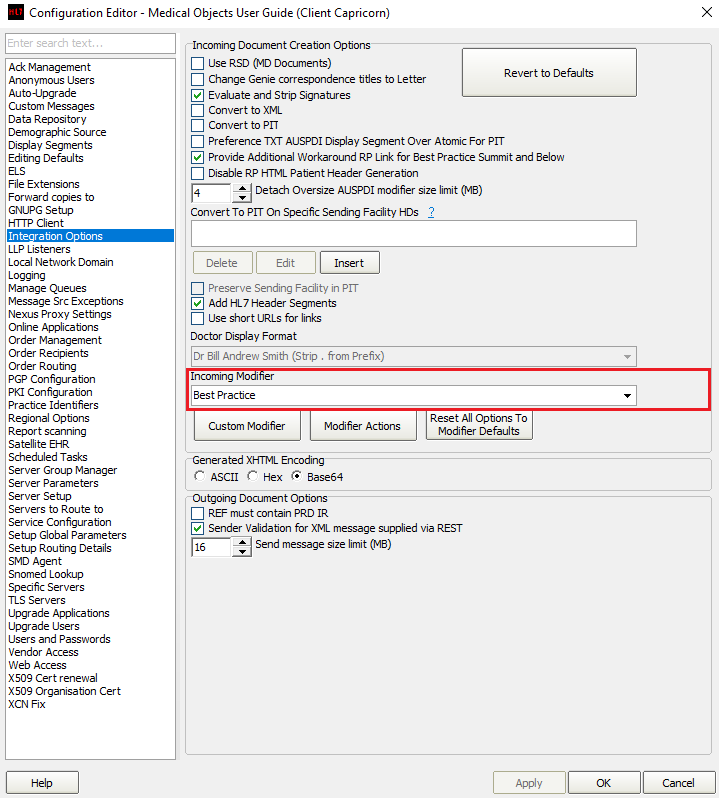
Select Server Parameters from the left panel.
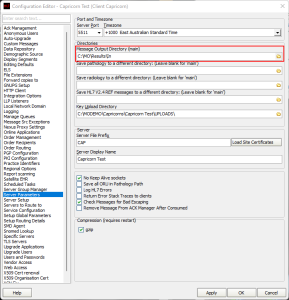
Under the Message Output Directory (main) set the results import path.
The recommended Import path is:C:\MO\Results\In
If the folder does not exist, you must create it.
Make sure the results folder has Modify, Read and Write Permissions, AND is shared on the Network.
The configuration is complete. Click Apply and OK.
Configuring Best practice to Import Results
- Open the Best Practice software.
- Click Setup from the toolbar shown above.
- Click on Configuration from the drop down menu.
- The Configuration window should be displayed.
- First if Best Practice was previously setup to use the import paths you have chosen they will need to be removed so they don't compete with the new import rules.
Select Results Import from the left panel.
If any paths under Acknowledgements use the ACK path, in the Capricorn configuration above, they can be removed using the Remove button.
If any paths under Report file search paths use the IN path, in the Capricorn configuration above, to be used for importing then they will need to be removed by choosing the Check paths button.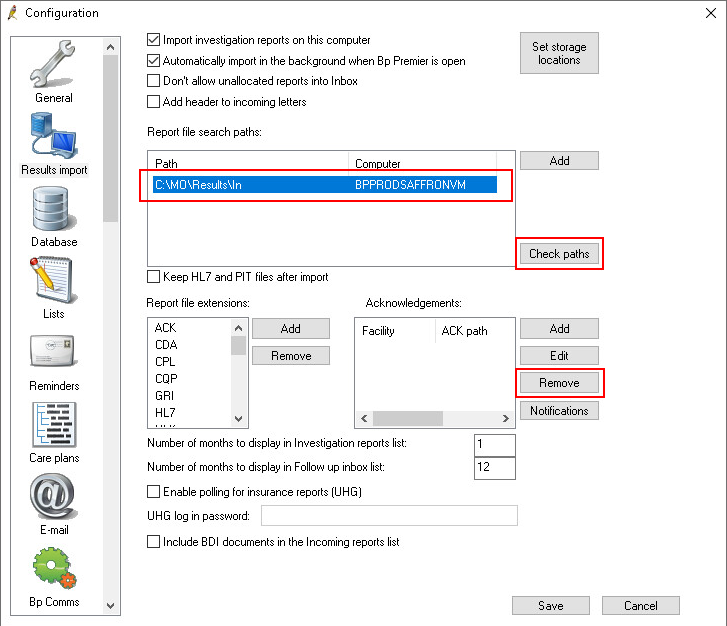
- Select the path/s that need to be deleted then choose Delete. Click Close when done.
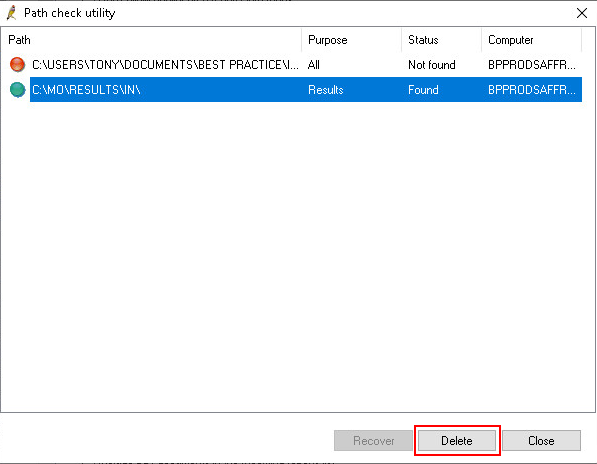
- Select Messaging.
In the Messaging providers list, if a Medical Objects doesn't exits then create one by selecting Add.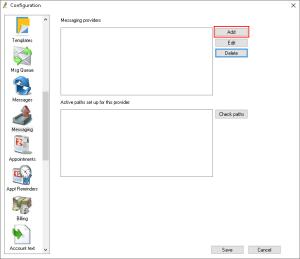
- Set the following settings.
Provider name: Medical Objects
If Medical Objects is your default or only messaging provider tick Use as default messaging provider.
Tick Use Allows Acknowledgements.
Tick Include a formatted text OBX in REF.
Tick Use the same path on all computers.
Using a network share path, for the IN, OUT and ACK folders that were created at the start of this walk-through, populate the Path for incoming messages, Path for outgoing messages and Path for acknowledgements.
Click Save.
- No labels